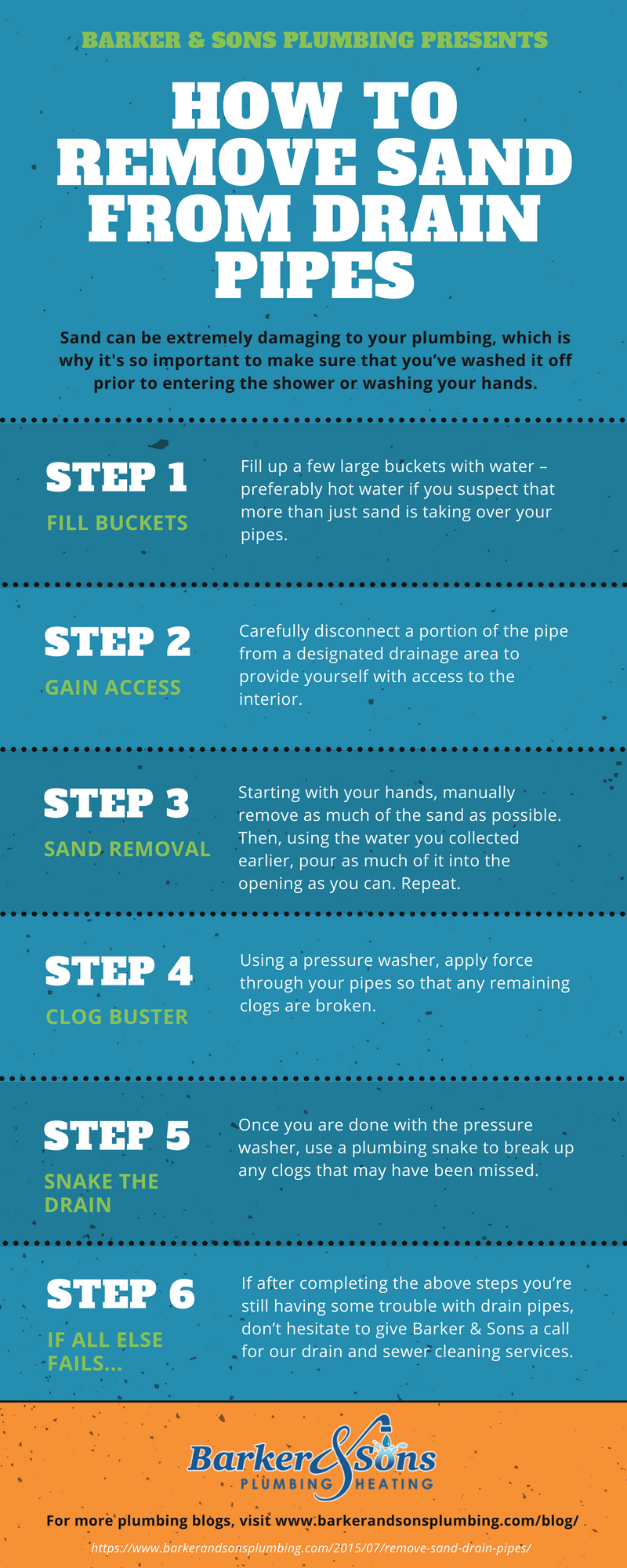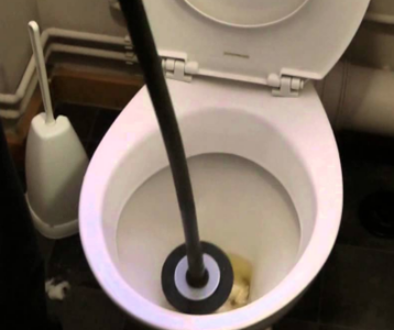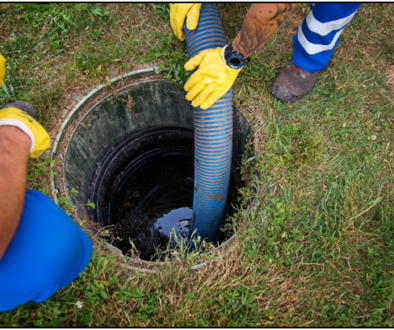How To Unblock A Drain Full Of Sand
Have you ever encountered a stubborn drain clogged with sand? It’s frustrating, isn’t it? But don’t worry, I’ve got you covered! In this guide, I’ll show you how to unblock a drain that’s full of sand, so you can get things flowing smoothly again in no time.
Sand-filled drains can be a major headache, causing water to back up and create a mess. But fear not, because I’ve gathered some practical tips and tricks that will help you tackle this problem like a pro. So get ready to roll up your sleeves and let’s dive in!
When it comes to unclogging a sand-filled drain, there are a few simple yet effective methods you can try. From using a plunger to utilizing a homemade solution, I’ll walk you through each step to ensure your drain is sand-free. By the end of this guide, you’ll have the knowledge and confidence to unclog any drain obstructed by sand. So let’s get started and bid farewell to those pesky sand-related plumbing issues!
- Start by removing the drain cover using a screwdriver.
- Use a plunger to create suction and loosen the sand blockage.
- If the plunger doesn’t work, insert a drain snake into the pipe and rotate it to break up the sand.
- Flush the drain with hot water to remove any remaining debris.
- Replace the drain cover and test the flow by running water.

How to Unblock a Drain Full of Sand: A Complete Guide
Dealing with a drain full of sand can be frustrating, but with the right knowledge and tools, you can easily unblock it and restore proper drainage. In this article, we will guide you through the process of unclogging a drain clogged with sand, providing step-by-step instructions, expert tips, and helpful advice. Whether you’re dealing with a sandy clog in your shower drain, sink drain, or outdoor drain, this comprehensive guide has got you covered.
The Importance of Unclogging a Drain Full of Sand
When a drain becomes clogged with sand, it can lead to significant drainage problems. Not only can it prevent water from flowing freely, but it can also lead to unpleasant odors and potential damage to your plumbing system. Taking the time to unblock a sand-filled drain is crucial for maintaining a functional and healthy drainage system. By following the steps outlined in this guide, you’ll be able to effectively remove the sand clog and ensure your drains are running smoothly once again.
Getting Started: Tools and Preparations
Before diving into the process of unblocking a drain full of sand, it’s important to gather the necessary tools and make the necessary preparations. Here’s what you’ll need:
1. Rubber gloves: To protect your hands from any debris or bacteria.
2. Plunger: Used to create pressure and dislodge the sand clog.
3. Drain snake or wire hanger: For removing any stubborn sand particles.
4. Bucket: To collect any water or debris that may come out of the drain.
5. Baking soda and vinegar: A natural and effective solution for breaking down sand clogs.
6. Hot water: Helps flush out loosened debris and clear the drain.
7. Wet/dry vacuum: Optional, but can be useful for sucking out sand from the drain.
Step 1: Remove the Drain Cover
The first step in unclogging a drain full of sand is to remove the drain cover. Use a flathead screwdriver or a suitable tool to unscrew or pry off the cover. Set it aside in a safe place where it won’t get lost or damaged.
Once the cover is removed, you’ll have better access to the drain and can proceed with the unclogging process.
Tips:
- Use a flashlight to inspect the drain and identify the extent of the sand clog.
- If the drain cover is difficult to remove, try applying some WD-40 or a similar lubricant to loosen it.
- Wear your rubber gloves throughout the entire unclogging process to protect your hands.
Step 2: Use a Plunger to Create Pressure
With the drain cover removed, it’s time to use a plunger to create pressure and dislodge the sand clog. Place the plunger over the drain opening, ensuring a tight seal, and then vigorously push and pull the plunger handle up and down. This action will create a suction force that can help loosen the sand and allow it to flow down the drain.
Tips:
- For better results, use a plunger specifically designed for drains, such as a cup plunger.
- If the plunger doesn’t seem to be effective, try applying petroleum jelly to the rim of the plunger to improve the seal.
- Repeat the plunging motion several times to dislodge as much sand as possible.
Step 3: Remove Stubborn Sand with a Drain Snake or Wire Hanger
If the plunger alone isn’t enough to completely remove the sand clog, it’s time to bring in a drain snake or a wire hanger. These tools can help you physically pull out any stubborn sand particles that are stuck in the drain.
If using a drain snake, insert it into the drain and rotate it clockwise while pushing it further in. This twisting motion will help catch and snag the sand, allowing you to pull it out. If using a wire hanger, straighten it out and create a hook at one end. Insert the hook into the drain and maneuver it to catch onto the sand, then carefully pull it out.
Tips:
- Be gentle when using a drain snake or wire hanger to avoid scratching or damaging the inside of the drain.
- If you encounter resistance, gently rotate or wiggle the tool to dislodge the sand before pulling it out.
- Use a flashlight to better see inside the drain and ensure you’ve removed all the sand particles.
Step 4: Break Down the Remaining Sand with Baking Soda and Vinegar
Even after using a plunger and a drain snake or wire hanger, there may still be some residual sand in the drain. To further break down and flush out this remaining sand, you can use a combination of baking soda and vinegar.
Baking soda and vinegar method:
- Pour about half a cup of baking soda down the drain.
- Follow it with an equal amount of vinegar.
- Cover the drain opening to contain the fizzy reaction between the two ingredients.
- Allow the mixture to sit for about 15-30 minutes.
- After the fizzing has stopped, flush the drain with hot water to remove the loosened sand.
Tips:
- Ensure that the baking soda and vinegar are well-distributed in the drain by pouring them down slowly and evenly.
- Don’t forget to cover the drain opening to trap the fizzing action and maximize its effect on the sand clog.
- Use boiling water if possible, as it can help dissolve and remove any remaining sand more effectively.
Step 5: Flush the Drain with Hot Water
After using the baking soda and vinegar mixture, it’s important to flush the drain with hot water to clear out any loosened sand particles. Carefully pour boiling water down the drain in a slow and controlled manner, allowing it to flow through the pipes and carry away the remaining sand.
Continue pouring hot water until the drain is running clear without any signs of sand or blockage.
Tips:
- Be cautious when handling boiling water to avoid burns. Pour it slowly and steadily to prevent splashing.
- If you are unable to use boiling water, very hot tap water can also be effective in flushing out remaining sand.
- Repeat the process of pouring hot water a few times to ensure thorough removal of any sand residue.
Step 6: Optional: Use a Wet/Dry Vacuum for Further Cleaning
If you want to ensure a thorough cleaning of the drain and remove any remaining sand, you can use a wet/dry vacuum. These powerful devices are designed to suck out debris and liquids from drains, making them a handy tool for clearing sand clogs.
Attach the appropriate nozzle to the vacuum and insert it into the drain opening. Turn on the vacuum and carefully guide it into the drain, moving it back and forth slowly to collect any sand that may still be present.
Tips:
- Make sure the wet/dry vacuum is suitable for use with liquids and has the necessary attachments for drain cleaning.
- Take your time when using the vacuum, allowing it to effectively draw out any remaining sand without causing damage to the drain.
- Perform a final check with a flashlight to ensure that the drain is free of any sand particles.
Additional Tips for Preventing Sand Clogs
Now that you’ve successfully unblocked your drain full of sand, it’s important to implement preventive measures to avoid future clogs. Here are some helpful tips:
- Install drain covers or strainers to catch large sand particles before they enter the drain.
- Regularly clean these drain covers or strainers to prevent the accumulation of sand and debris.
- Rinse off sandy items, such as beach toys or shoes, before using the sink or shower to minimize sand entering the drains.
- Consider using a sand filter or separator system if you routinely deal with large amounts of sand, such as in commercial or industrial settings.
- Regularly flush your drains with hot water to keep them clear and prevent sand buildup.
By following these tips and using the techniques outlined in this guide, you can effectively unblock a drain full of sand and maintain smooth, hassle-free drainage. Remember to always take the necessary precautions and consult a professional if you encounter any major plumbing issues.
Key Takeaways: How to Unblock a Drain Full of Sand
- 1. Gather the necessary tools such as a plunger, drain snake, and bucket.
- 2. Remove the drain cover and use a flashlight to assess the amount of sand in the drain.
- 3. Use a plunger to create pressure and dislodge the sand.
- 4. If the plunger doesn’t work, try using a drain snake to physically remove the sand.
- 5. Once the sand is cleared, run hot water down the drain to flush out any remaining debris.
Frequently Asked Questions
Dealing with a drain that is clogged with sand can be quite frustrating. Here are some commonly asked questions and their answers to help you unblock a drain full of sand:
1. What is the best way to remove sand from a clogged drain?
The first step is to try manually removing as much sand as possible using a plunger or a drain snake. If that doesn’t work, you can try using a wet/dry vacuum to suck out the sand from the drain. It’s important to be careful and not push the sand further into the drain while attempting these methods.
If the manual methods don’t work, you can also try using a mixture of equal parts baking soda and vinegar to dissolve the sand. Pour the mixture down the drain and let it sit for a while before rinsing it with hot water. If the blockage persists, it might be best to call a professional plumber for assistance.
2. How can I prevent sand from clogging my drain in the first place?
Prevention is always better than dealing with a clogged drain. To prevent sand from entering your drains, it’s advisable to use drain covers or strainers in sinks, showers, and bathtub drains. These will capture sand particles before they can reach the pipes and cause blockages.
In outdoor areas like patios or decks, consider using mats or rugs to prevent sand from being tracked indoors. Additionally, regularly sweeping or vacuuming these areas can help minimize the amount of sand that ends up in the drains.
3. Can I use chemical drain cleaners to remove sand blockages?
Chemical drain cleaners are not recommended for sand blockages. Most drain cleaners are designed to dissolve organic matter, such as hair, grease, or food particles, but they are not as effective against sand. It’s best to avoid using chemical drain cleaners as they can be harmful to your pipes and the environment.
If you’ve tried other methods and the sand blockage persists, it would be wise to consult a professional plumber who can assess the situation and provide appropriate solutions.
4. Is it possible to clear a heavily clogged drain full of sand on my own?
Clearing a heavily clogged drain full of sand on your own can be challenging. If the blockage is severe, it may require professional assistance. Heavy sand buildup can be stubborn and difficult to remove with DIY methods. By calling a professional plumber, you can ensure that the drain is cleared effectively and without causing further damage.
A professional plumber will have the necessary tools and expertise to tackle tough blockages, including sand buildup. It’s better to seek professional help rather than risk damaging your plumbing system or wasting time and effort on ineffective DIY attempts.
5. Are there any alternative methods for unblocking a drain full of sand?
If traditional methods don’t work, there are a few alternative methods you can try. One option is using a high-pressure water jet or hydro jetting to blast through the sand blockage. This method uses powerful streams of water to break down and push the sand away from the drain.
Another alternative is using a plumbing auger or snake specifically designed for sand blockages. These specialized tools have robust spirals that can effectively break apart and remove sand from drains. However, it’s important to exercise caution and follow the instructions carefully to avoid causing damage to your pipes or fittings.
Summary
So, here’s what we learned about unblocking a drain full of sand. First, make sure you have the right tools, like a plunger or a drain snake. Next, try removing any visible sand before using any liquids. If that doesn’t work, you can use a mixture of vinegar and baking soda to break up the clog. Remember to pour hot water down the drain afterwards. And lastly, if all else fails, it’s best to call a professional plumber for help. Don’t be discouraged, with the right approach, you can get that drain flowing again in no time!




